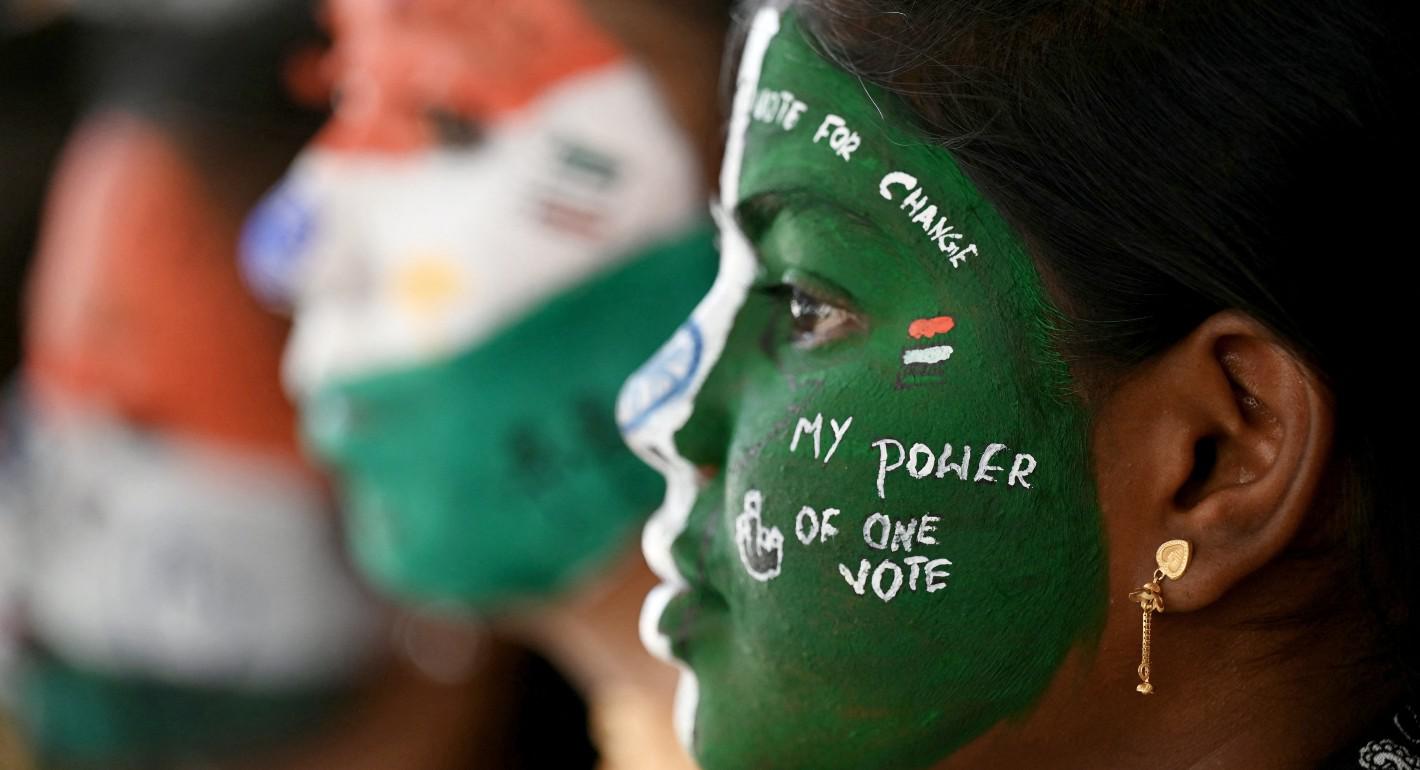
What Lies Behind India’s Rising Female Voter Turnout
Despite the progress on women’s turnout heading into the 2024 elections, a persistent gender gap colors many other forms of political engagement.

article
What Lies Behind India’s Rising Female Voter Turnout
Despite the progress on women’s turnout heading into the 2024 elections, a persistent gender gap colors many other forms of political engagement.
by Rithika Kumar
Published on April 5, 2024

program
South Asia
The South Asia Program informs policy debates relating to the region’s security, economy, and political development. From strategic competition in the Indo-Pacific to India’s internal dynamics and U.S. engagement with the region, the program offers in-depth, rigorous research and analysis on South Asia’s most critical challenges.
Learn More

project
India Elects 2024
India Elects 2024 presents sober, data-driven research and analysis from the world’s best young India scholars on the key drivers animating this massive democratic exercise. The initiative takes readers beyond the horse race, focusing on deeper questions about India’s political economy.
Learn More
In India, as in many democracies around the world, there has long been a discernible gender gap in citizens’ political participation. For decades, Indian men were significantly more likely to cast their ballots on election day compared to women. It is noteworthy, therefore, that in the country’s 2019 general election, the historic gap between male and female turnout came to an end; for the first time on record, women voters turned out to vote at higher rates than men (see figure 1). Predictions for India’s upcoming 2024 general election suggest that this trend is likely to continue.

Although the gap between male and female voter turnout in India has been gradually shrinking in recent years, the convergence in electoral participation is nevertheless surprising for multiple reasons. First, as noted by Franziska Roscher, the increase in female turnout in India is occurring while female labor force participation—an important driver of women’s political participation—remains low compared to peer economies. Second, national-level data from the National Election Study (NES), conducted by the Lokniti Program of the Centre for the Study of Developing Societies, and other smaller studies confirm that women lag men across all measures of nonelectoral political engagement. For instance, data from two separate primary surveys—conducted in Rajasthan and Madhya Pradesh by political scientists Soledad Prillaman and Gabrielle Kruks-Wisner, respectively—demonstrate that while the gender gap in voter turnout has closed, gaps are all too visible in other forms of sustained political engagement, such as contacting elected representatives, attending public meetings, and participating in campaign activities. Third, women continue to be underrepresented in India’s national parliament and its state assemblies.
Therefore, the increase in female turnout in what remains a largely male-dominated political arena raises two important questions. Why is women’s turnout rising? And what impact might this have on electoral dynamics as India heads into the 2024 general elections?
Why Is Female Voter Turnout Rising?
The upward trend in female turnout in India is likely a result of several factors, operating both at the individual and institutional level. The self-empowerment hypothesis posits that rising literacy levels and media exposure have increased awareness among women who, in turn, feel more empowered to exercise their political agency. Utilizing survey data from the NES, at least two studies found a positive correlation between women’s turnout and factors such as political knowledge, literacy, and media exposure. Using data on male and female turnout across state and national elections over five decades, economists Mudit Kapoor and Shamika Ravi also found evidence in favor of the self-empowerment hypothesis, both in traditionally “backward” and in relatively more developed Indian states. They argue that these trends are likely driven by the “voluntary participation of women voters in elections.”
The self-empowerment hypothesis itself is nested within traditional resource-based theories of female participation in electoral and nonelectoral forms of political engagement. These theories, originating in the West, argue that as women gain access to material resources thanks to expanded literacy, financial autonomy (through participation in the labor force), and greater information availability, they are likely to increase their political engagement. In other words, advancements in economic development are followed by a rise in female engagement in political arenas.
However, in India, this explanation is complicated by the fact that female turnout rose even as female labor force participation declined. In fact, recent research from both India and Pakistan argue that female political engagement in South Asia cannot be understood without examining the role of the household in facilitating female political engagement. While the self-empowerment hypothesis is a good start, it cannot fully explain dramatic rise in turnout.
In contrast, many observers have argued that institutional factors, such as the sustained effort by the Election Commission of India (ECI) to boost women’s electoral participation, better explain the rise in female turnout. In 2009, the ECI inaugurated the Systematic Voters’ Education and Electoral Participation program with the goal of increasing voter awareness and improving voter turnout. In fact, a key objective of the program was to increase female turnout and close the voting gender gap. Although a systematic study of the program has not been conducted, the upward trajectory in female turnout clearly begins in 2009 (see figure 1).
Although it is likely that the ECI’s efforts have aided women’s turnout, it is worth noting that women are underrepresented on the country’s electoral rolls. One way of assessing this is to calculate the electoral sex ratio (ESR), which is the ratio of female electors (who are registered to vote and whose names are on the voter rolls) to male electors. While India’s national ESR of 948 women per 1,000 men is in line with the underlying skewed adult sex ratio (of 943 women per 1,000 men), multiple constituencies report much lower ESRs, implying that many women remain missing from the registration process.
In fact, male migration might help to explain why the voter sex ratio sometimes tilts in favor of women: male migrants are often unable to cast their votes in state and national elections since they are living (often temporarily) away from home. The observed increase in women’s turnout could simply reflect this dynamic. However, it is more likely that multiple factors working together are responsible for shifts in electoral participation.
Political Parties Take Notice
Irrespective of the reasons for the surge in female turnout, political parties across the spectrum have taken notice and made serious efforts to attract the female vote. For instance, some observers have argued that an important reason the Bharatiya Janata Party (BJP) won an overwhelming majority in last year’s state assembly election in Madhya Pradesh was the popularity of its Ladali Behna scheme, which promised a 1,000-rupee cash handout to women. Similarly, the BJP central government has implemented schemes like Ujjwala Yojana, which provides subsidized gas cylinders—a clean source of cooking fuel—to women from poor households. Furthermore, in September 2023, Parliament passed a women’s reservation bill that mandates gender quotas in state and national assemblies. When the bill is implemented, one-third of legislative seats will be reserved for women.



